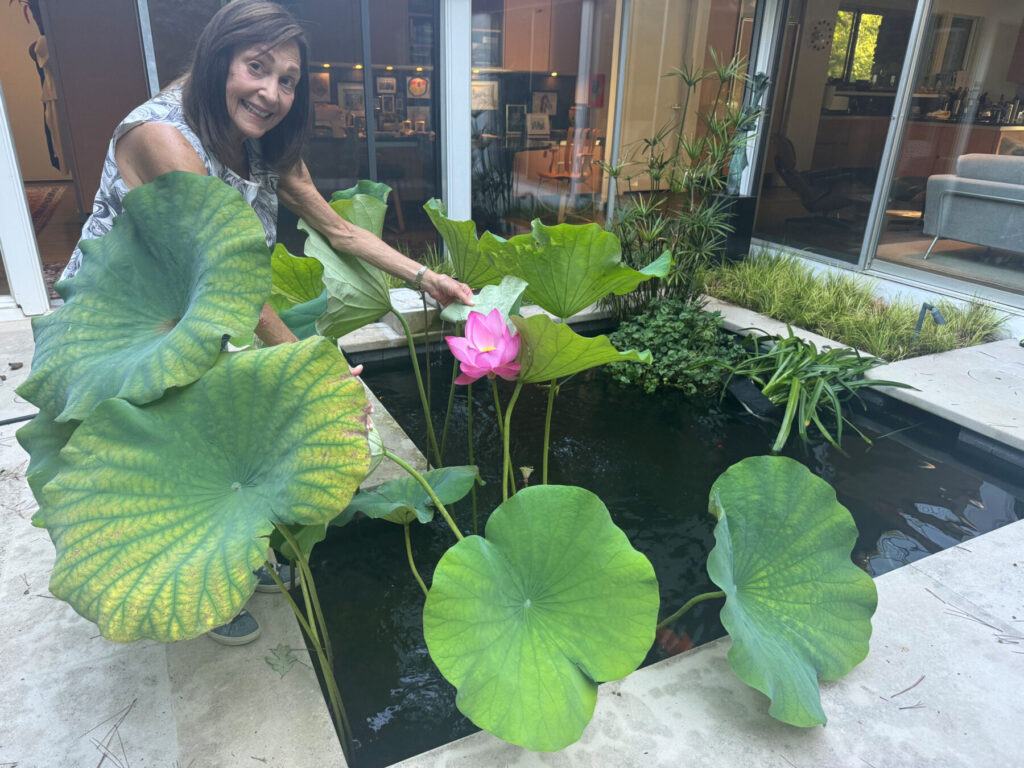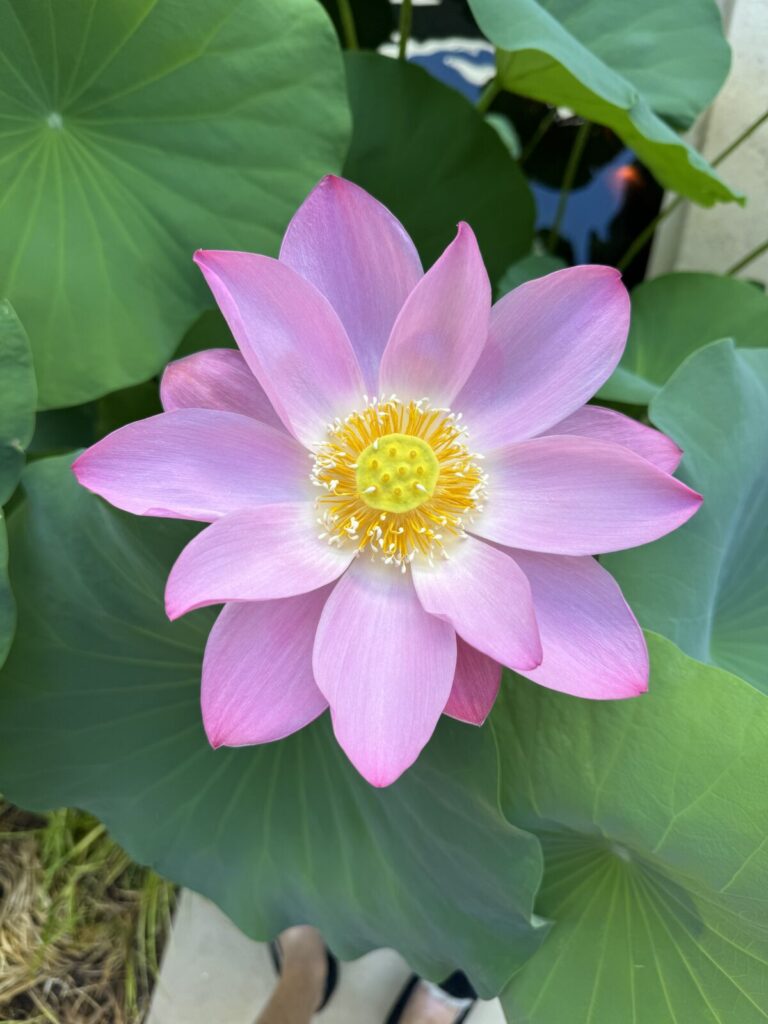by Robin Pollack, Fulton County Master Gardener Extension Volunteer
This article is part of Garden Buzz, a series from Appen Media and the North Fulton Master Gardeners, where rotating columnists explore horticulture topics like herbs, insects, and wildlife conservation. Find all Garden Buzz articles here.
A water garden can be a beautiful, soothing addition to any outdoor space. Whether you have a large, in-ground pond or a small container on your balcony, the right aquatic plants can transform your garden into a lush oasis. Water gardens play a significant role in feng shui and healing gardens, offering both aesthetic appeal and a sense of tranquility.
Water gardens are more than just a place for fish; they’re a dynamic ecosystem that supports native wildlife and aquatic creatures. By choosing the right plants, you can create a balanced and thriving environment that also enhances the visual appeal of your space.

Even if you don’t have a large yard, you can start with a simple container water garden.
Aquatic plants are essential to the health and beauty of a water garden. They not only add color and texture but also play crucial roles in maintaining a healthy ecosystem. Floating and submerged plant species help oxygenate and filter the water, providing a healthier environment for fish and frogs. They also help control algae growth by absorbing nutrients and blocking sunlight, reducing the need for maintenance.
There are many types of pond plants:
- Moisture-loving plants: These plants thrive in damp conditions but do not require standing water. They can be used to create a lush, green backdrop around the edges of your water garden.
- Marginal plants: Growing with their roots in water and foliage above, marginal plants thrive at the edges of ponds. They come in a range of species, some preferring shallow water while others do well in deeper conditions.
- Floating plants: Floating on the water’s surface, these plants absorb nutrients directly from the water and don’t need soil. They provide shade to help prevent algae growth and offer shelter to aquatic animals. However, many are not winter-hardy and may need to be brought indoors during colder months.
- Submerged plants: These grow entirely underwater, helping to oxygenate the water. They are crucial for maintaining clear water by absorbing excess nutrients and play an essential role in the overall health of the pond.
Choosing the right plants is key to a successful water garden. Opt for manageable plants that won’t overwhelm your space. For example, while water hyacinths are visually appealing, they can quickly take over a pond if not carefully managed. It’s also important to research any plant before introducing it to your garden to avoid invasive species that can disrupt your water ecosystems.

Favorite pond plants for gardens in Georgia (zones 7-8):
- Lotus (Nelumbo nucifera): These striking plants add symmetry and color to your garden. Unlike water lilies, lotus flowers rise above the water, making them a standout feature.
- Cattails: These plants bring a natural, relaxed vibe to your pond. They grow well in both water and moist soil and are best planted in pots to prevent aggressive spreading.
- Pitcher plants: These carnivorous plants are excellent for bog gardens. They require specific soil mixtures, often thriving in peat, and need little care once established.
- Water lilies: Available in hardy and tropical varieties, water lilies add color and provide resting spots for frogs. Hardy types survive Georgia winters, while tropical ones need to be treated as annuals or overwintered indoors.
- Pickerelweed: This plant adds height and beautiful purple spears to your garden. It’s also used to stabilize retention ponds and natural water bodies, thriving in shallow water with plenty of sunlight.
A water garden should be a source of relaxation, not stress. To keep it that way, choose plants that are easy to manage. If you’re unsure about plant selection or pond maintenance, consulting a landscape professional can be a wise investment. They can help you choose plants that complement each other in color and texture and assist with installation and maintenance to ensure your water garden remains beautiful and balanced.
With the right plants and a bit of planning, your water garden can become a serene retreat that brings joy for years to come. Whether you’re looking to create a small, simple container garden or a larger in-ground pond, the key to success lies in choosing the right plants and providing them with the care they need. Embrace the beauty and tranquility of water gardening, and transform your outdoor space into a lush, vibrant oasis.
For tips on selecting and maintaining annuals and perennials for your water garden, watch my virtual talk, Annual and Perennial Plants for Water Gardens, from the NFMG Spring 2023 Gardening Lecture Series on the NFMG YouTube channel.
Happy Gardening!
Learn More
- ‘Complete Guide to Water Garden Plants’ by Helen Nash
- ‘Complete Guide to Water Gardens, Ponds and Fountains’ by Kathleen Fisher
- ‘American Horticulture Society Complete Guide to Water Gardening’ by Peter Robinson
- ‘Backyard Water Gardens’ by Veronica Fowler
- Water Gardening with Native Plants, Cherokee County Master Gardeners newsletter, pg. 5
About the Author

This week’s “Garden Buzz” features Sandy Springs resident Robin Pollack, an accomplished artist and Master Gardener. Active in the Atlanta art community since 1970, Robin has taught for over 30 years at Chastain Arts Center and has been a Master Gardener since 2005. As a member of North Fulton Master Gardeners, she has taught vegetable gardening at Farm Chastain and at her own garden. Her garden, influenced by her artistic eye, has been featured on tours including Atlanta Botanical Garden and Georgia Perennial Plant Association.